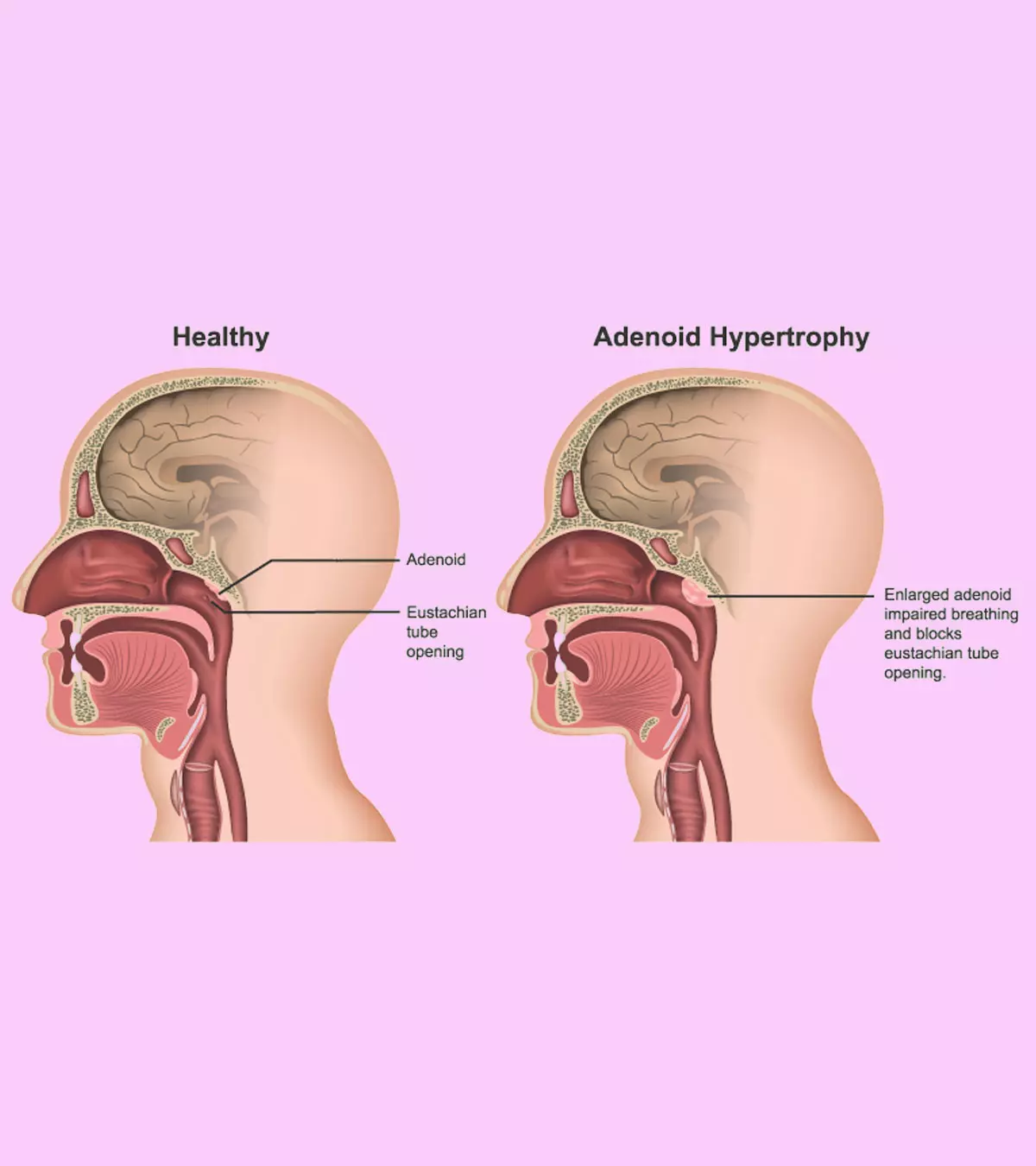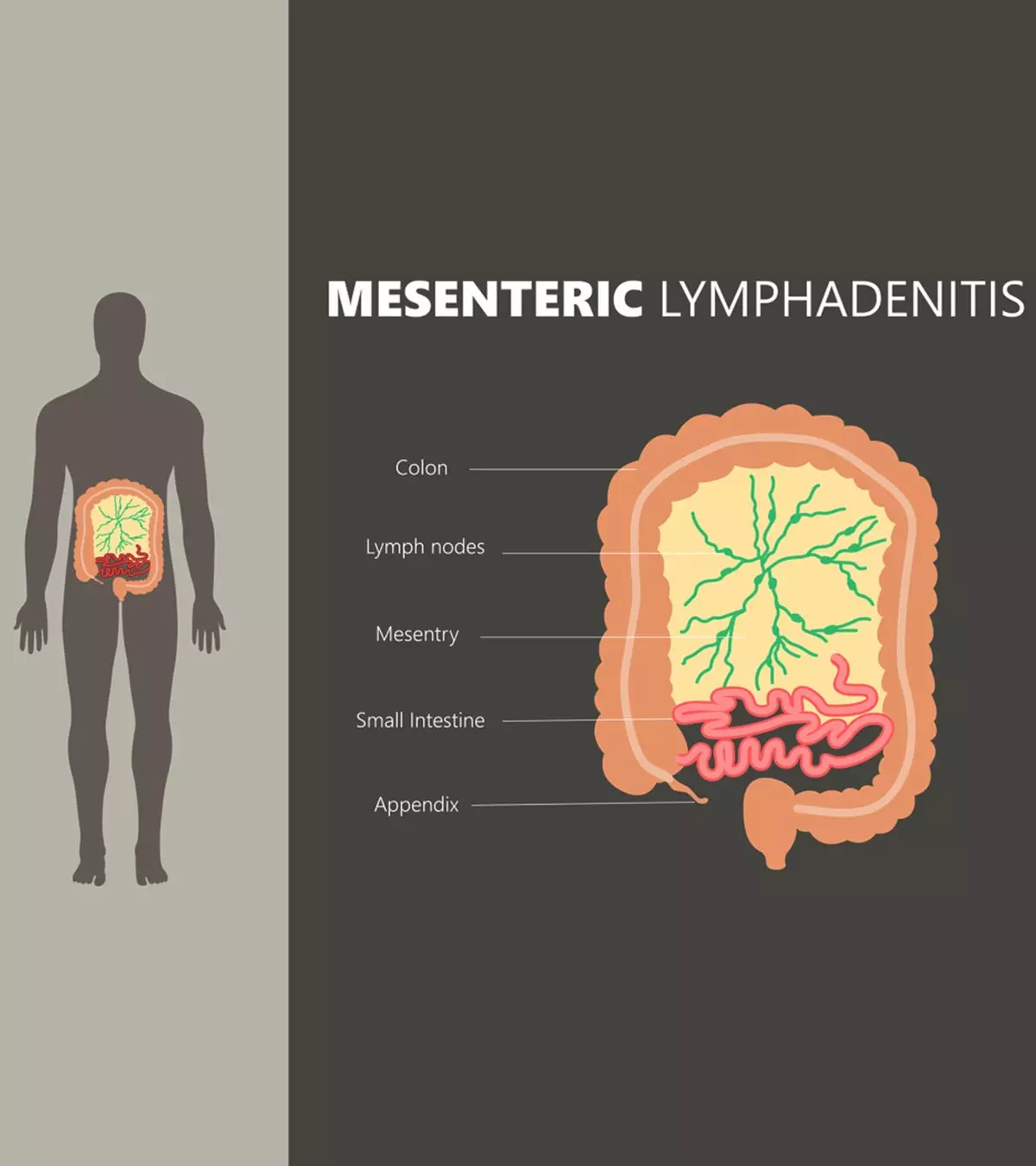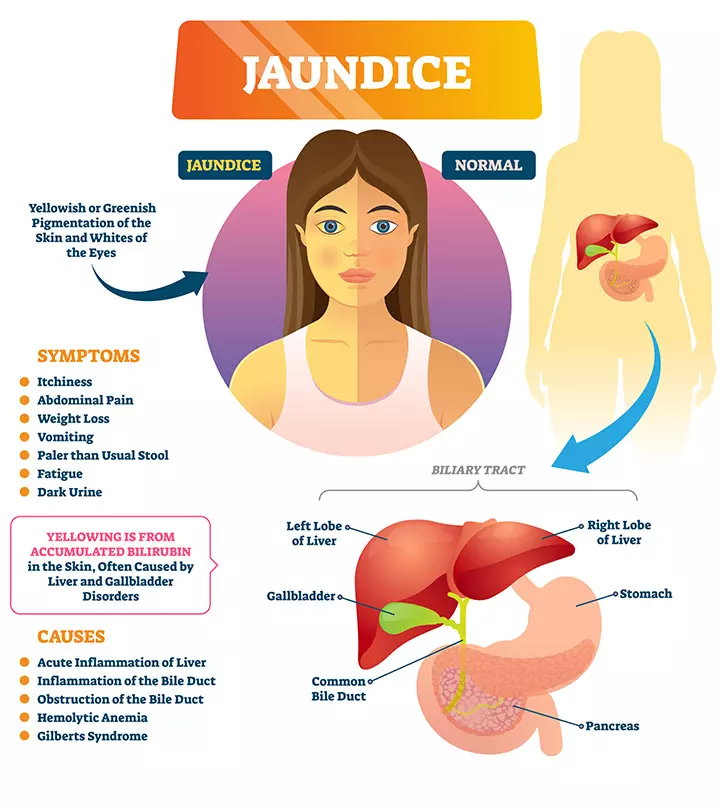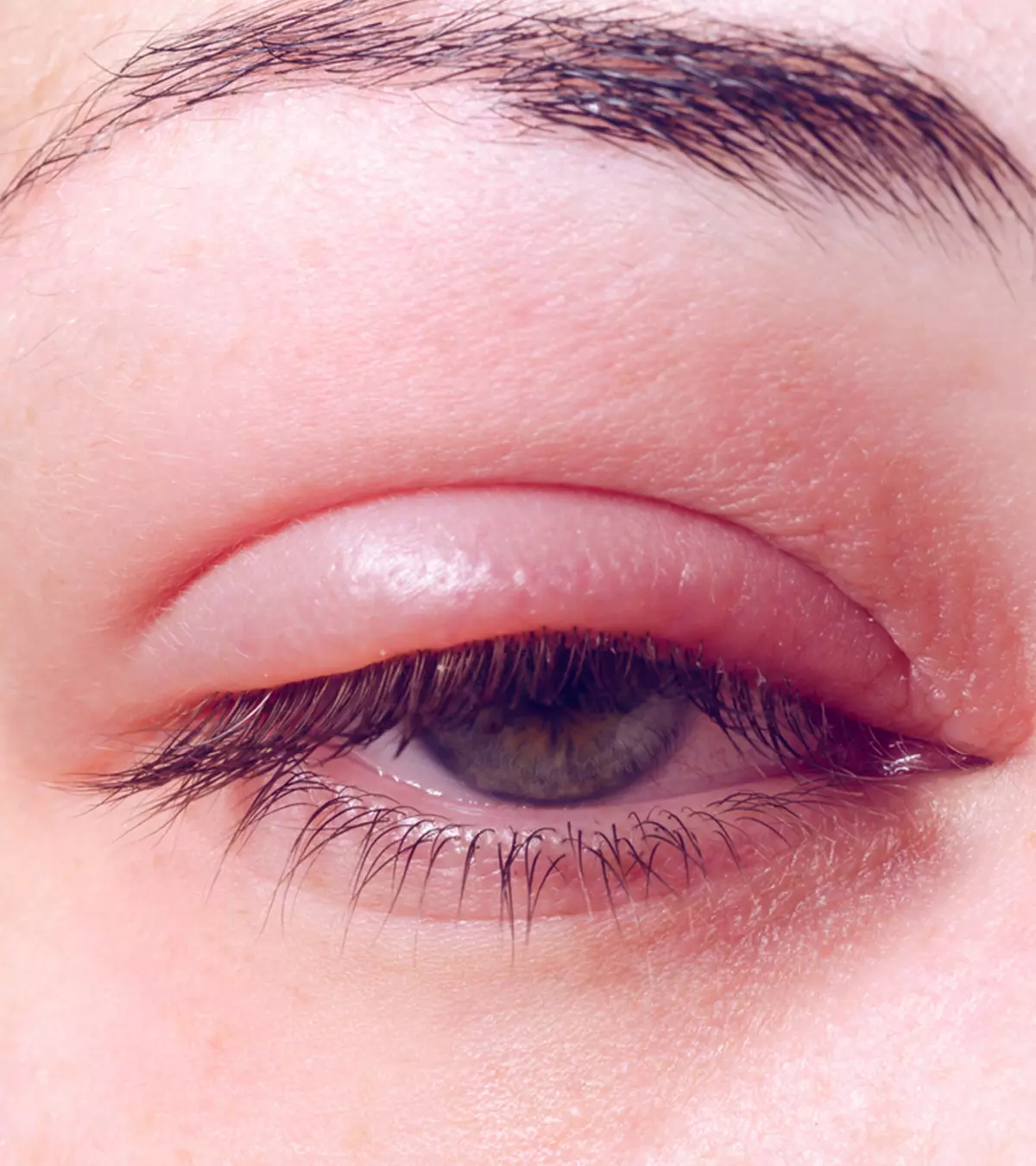
Image: Shutterstock

Adenoids in children are lymphatic tissues located at the back of the nose and throat (nasal passage). They are a part of the immune system and protect the body from harmful pathogens (bacteria and viruses) that a child may inhale or swallow with air, food, and water. The main responsibility of the adenoids is to detect different germs and trigger an immune response (1).
Enlarged adenoids are adenoids that swell due to an infection. As adenoids are lymphatic tissues, swollen lymph nodes in children are often seen when their adenoids are enlarged. However, the adenoidal swelling can also be caused by other reasons that may be unclear. When the adenoids drastically increase in size, they may interfere with the child’s breathing or flow of mucus, leading to complications. Hence, prompt diagnosis and treatment are essential.
Read on as we explain enlarged adenoids in kids, and their causes, symptoms, diagnosis, treatment, and management.

Key Pointers
- Adenoids are one of the four sets of tonsils located at the back of the nasal cavity.
- Enlarged adenoids can be caused by allergies or pollution.
- Severe snoring, sinusitis, or sleep apnea are symptoms of enlarged adenoids.
- Medications and nasal steroid sprays are used to treat this condition.
Are Adenoids And Tonsils The Same?
Adenoids, also called pharyngeal tonsils, are one of the four sets of tonsils, which further include palatine tonsils, tubular tonsils, and lingual tonsils (2). All of these belong to the body’s lymphatic system and serve as the immune system’s first line of defense against infections. Adenoids are not easily visible through your mouth (3).
What Are Enlarged Adenoids?

Swollen and inflamed adenoids are known as enlarged adenoids. Adenoiditis and adenoid hypertrophy are the other terms used for enlarged adenoids (4).
Causes Of Enlarged Adenoids
Enlarged adenoids may result from chronic adenoid infection (adenoiditis), allergies, and pollution. Some children may have enlarged adenoids from birth. Cancerous growth can also lead to such enlargements (5). Allergic rhinitisiInflammation of the nose caused by an allergen leading to itching, sneezing, and watery eyes. is also associated with adenoid hypertrophy (6) (7).
 Did you know?
Did you know?Symptoms Of Enlarged Adenoids
Some of the symptoms of enlarged adenoids in children include (1) (4) (8) (9) (10):
- Breathing difficulties
- Difficulty in swallowing
- Blocked and stuffy nose
- Severe snoring
- Sleep apnea (repeated pauses in breathing during sleep)
- Restless sleep, bedwetting, and frequent waking up from sleep

- Mouth breathing, causing dry mouth and lips
- SinusitisiAn infection in which the tissues that line the sinuses (hollow, air-filled spaces in the skull) get swollen or inflamed.
- Middle ear infection, fluid build-up or ’glue ear,’ and ear pain
If left untreated, enlarged adenoids can increase the risk of respiratory and ear infections, and persistent sleep issues.
Milka, a mother and blogger, recounts the reasons behind her decision to have a tonsillectomy and adenoidectomy performed on her four-year-old son. She explains, “The poor little guy has had giant tonsils for most of his life, not a reason in itself to remove them surgically, according to most pediatricians. However, he’s been a recurring victim of sore throats (the dreaded tonsillitis), strep throats, halitosis (bad breath), poor appetite due to back-of-the-mouth obstruction, and drum roll… sleep apnea (i).”
Diagnosis Of Adenoiditis
Consult an ear, nose, and throat (ENT) specialist for the diagnosis of enlarged adenoids. The doctor will do a physical examination of the child’s ear, nose, and throat and palpate the neck along the jaw to check for any swellings.
The pediatric ENT specialist may also use an endoscope (a flexible telescope with a light and camera attached to it) to diagnose adenoiditis. An X-ray of the throat (very rarely done), along with some blood tests, might also be needed for confirmation of adenoiditis (11).
Treatment Of Enlarged Adenoids
The severity of the condition determines the treatment to be given (11) (12).
- In less severe cases, the doctor may prescribe medications like antihistamines to manage allergies.
- The doctor may also prescribe nasal steroid sprays to reduce swelling. A nasal spray for kids is often prescribed in conjunction with an antihistamine. However, it is case-dependent.
- In cases of severe or chronic adenoid infections or recurrent sinusitis due to adenoid hypertrophy, adenoidectomy is recommended. It is a relatively simple procedure and may not pose a health risk. However, research has shown that adenoidectomy elevates the risk of upper respiratory tract infections by at least 11% in children. Additionally, as per a study published in the International Journal of Pediatric Otorhinolaryngology, the prevalence of adenoid regrowth after adenoidectomy was found to be 8%. Therefore, it is important to talk to your doctor about the procedure and go ahead only if the benefits outweigh the risks. Therefore, talk to your doctor about the procedure and go ahead only if the benefits outweigh the risks.
Note:
The removal of the adenoids is known as adenoidectomy, while the removal of the palatine tonsils is known as tonsillectomy (4).
 Point to consider
Point to considerWhat Happens During An Adenoidectomy?
Surgical removal of adenoids is done under general anesthesia.
It is performed through the child’s open mouth and involves no cuts through the skin. The procedure usually takes around 30 minutes, and the child wakes up from anesthesia in the recovery room within 45 minutes or one hour after surgery.
Note that the child should not eat or drink for a few hours before the surgery as advised by your treating doctor (13)
 Experts say
Experts sayRisks Of An Adenoidectomy
Adenoidectomy is a relatively safe procedure, and the risks involved are rare. However, no surgery is totally risk-free, and that applies to the said procedure as well. Your child might experience problems with anesthesia or mild post-operative pain. Additionally, there may be a risk of developing infections, bleeding, alterations in vocal quality, and issues with persisting ear infections, nasal drainage, and breathing problems even after surgery.
Adenoids are located far back in the nasal passage, which makes 100 percent removal of the adenoid tissue quite impossible. Rarely, the tissue may grow back and continue to cause problems. In such cases, surgery may be required for a second time (14).
Care To Be Taken After Adenoidectomy
Making the child feel comfortable after the surgery and providing all the necessary care will help in speedy postoperative recovery. Here are a few pointers you should keep in mind.
- Give the child all the prescribed medications on time.

- Avoid medications that contain aspirin and ibuprofen, as these can cause bleeding (13) (15).
- Keep your child well-hydrated throughout the day. Avoid carbonated drinks.
- Give the child soft foods, such as soup, puddings, fresh fruit juices, popsicles, and mashed potatoes, in the initial days.
- Encourage them to avoid nose blowing and vigorous spitting for the first few days after the surgery.
- Discourage them from playing any contact sports for the first week following adenoidectomy.
- Use a cool-mist humidifier to soothe the child’s stuffy nose.
- Attend the follow-up appointment that is given after the surgery.
Recovery From Adenoidectomy
Complete recovery usually takes two to three weeks, but children can go to school and do their routine activities after a few days following adenoidectomy. Most children can eat and drink fluids normally within a few hours after the surgery, and there are no strict dietary restrictions post adenoidectomy.
Some children may experience an upset stomach, a mild fever, or vomiting during the first 24 hours after surgery, and a sore throat during the initial days. Neck soreness and snoring might also be present in some children until three weeks after surgery. Bad breath in kids is also a common symptom found post adenoidectomy (1).
When To See The Doctor Post Adenoidectomy?

Consult a doctor if you notice the following complications or conditions in your child after adenoidectomy.
- If vomiting and upset stomach persist for more than a day after surgery
- If the child shows signs of dehydration, such as dry and sticky lips, sunken eyes, and no urination for more than eight hours
- If bleeding occurs after the first day of surgery — the presence of small spots of blood in the nose or saliva for 24 hours following the surgery is common
- If your child coughs out bright red blood or blood clots
Note: Children with a history of cleft palateiA congenital condition where there is a split or opening in the roof of the mouth due to incomplete joining of the tissues. or neuromuscular disorders may be prone to speech abnormalities after adenoidectomy (16).
What Is The Long-Term Outlook For Swollen Adenoids?
Enlarged adenoids are common in children. If you notice any symptoms of adenoid it is, consult the doctor. It is a treatable condition, and in some cases, may resolve with simple antibiotic medications prescribed by the doctor.
 Point to consider
Point to considerFrequently Asked Questions
1. At what age can adenoids be removed?
Adenoidectomy can be done in children between one year and seven years of age. When a child reaches the age of seven, adenoids generally begin to shrink. They are considered vestigial organs (remnant organs without any purpose) in adults (14).
2. Can I stay with my child during the adenoidectomy?
No, you can’t be with your child during the surgery as the child is under general anesthesia. Once the surgery is done, and the child is moved to the recovery room, you can be with your child.
3. What foods should be avoided if you have enlarged adenoids?
Milk, eggs, and cod might worsen the condition in some cases. Dairy products should be avoided, as they increase mucus secretion in the respiratory system (17). However, this can vary depending on your child’s condition. Speak to the doctor about the foods to avoid after an adenoidectomy.
4. Can adenoids be treated with homeopathy?
No. For recurring adenoid enlargement conditions, one should get an examination done by an ENT specialist. Adenoidectomy is a common procedure with minimal risks. It is best to undergo adenoidectomy after careful examination and thorough discussion with the doctor.
Adenoidectomy is a common procedure with relatively. is best to undergo adenoidectomy after careful examination and thorough discussion with the doctor.
5. Can adenoids grow back in a child?
The adenoids can grow back as the complete adenoid tissue is not removed during surgery. However, a child may rarely require a second adenoidectomy (18).
6. Is a runny nose common after adenoidectomy?
Discomfort such as runny nose, noisy breathing, sore throat, or bad breath may be present for a few days after adenoidectomy. They will usually resolve after a week after surgery (19).
Enlarged adenoids in children is a common problem diagnosed by an ENT specialist following a physical examination. Trouble breathing, swallowing, blocked nose, and sinusitis are some of the symptoms of this condition. Enlarged adenoids can be corrected with medication if the condition is not severe. However, if severe, an adenoidectomy may be performed, where the adenoids are removed. Proper care should be given to your child post surgery to ease the recovery process. Further, consult your doctor if you notice any complications.
Infographic: How To Identify Enlarged Adenoids In Children
Adenoids help protect the nose and throat from inhaled pathogens; however, when they swell and become large, they can lead to various problems in children. Read through the infographic below to learn about various symptoms of enlarged adenoids in children to help you identify them early and get them treated promptly.
Some thing wrong with infographic shortcode. please verify shortcode syntax
From snoring to the appearance of an adenoid face, enlarged adenoids can cause several complications in children. Learn how to identify it and explanation of surgical treatments in this video.
Personal Experience: Source
MomJunction articles include first-hand experiences to provide you with better insights through real-life narratives. Here are the sources of personal accounts referenced in this article.
i. Tonsils out, air in!https://perfectingmotherhood.wordpress.com/2010/08/11/remove-tonsils-and-adenoids-in-children-with-sleep-apnea/
References
1. What are adenoids?; Children’s Minnesota
2. Tonsils; Medicine LibreTexts.
3. Udayan K. Shah; Enlarged Tonsils and Adenoids in Children; MSD Manual Consumer Version
4. Enlarged tonsils and adenoids; NCBI
5. Adenoid Hypertrophy in Adults: A case Series; NCBI
6. Allergic Rhinitis and Adenoid Hypertrophy in Children; NCBI
7. Adenoid Vegetation in Children with Allergic Rhinitis; NCBI
8. Enlarged Adenoids; Familydoctor.
9. Adenoids; BetterHealthChannel; State Government of Victoria, Australia
10. Ear Infection (Otitis Media); Cleveland Clinic
11. Adenoids in Children; Boys Town National Research Hospital.
12. Enlarged Adenoids; MedlinePlus
13. Surgery eating and drinking guidelines; Children’s Minnesota
14. Adenoidectomy (Adenoid Removal); Cleveland Clinic
15. Adenoidectomy; Boys Town National Research Hospital
16. What Parents Should Know About Adenoid Removal; Michigan Health
17. Does milk increase mucus production?; NCBI
18. What are adenoids?; Children’s Minnesota
19. Adenoids and Adenoidectomy; Nemours Children’s Health
20. Enlarged Tonsils and Adenoids; Boston Children’s Hospital
Community Experiences
Join the conversation and become a part of our nurturing community! Share your stories, experiences, and insights to connect with fellow parents.
Read full bio of Dr. Wayne Hough
Read full bio of Dr. Ritika Shah
Read full bio of Rebecca Malachi
Read full bio of Ghazia Shah
















